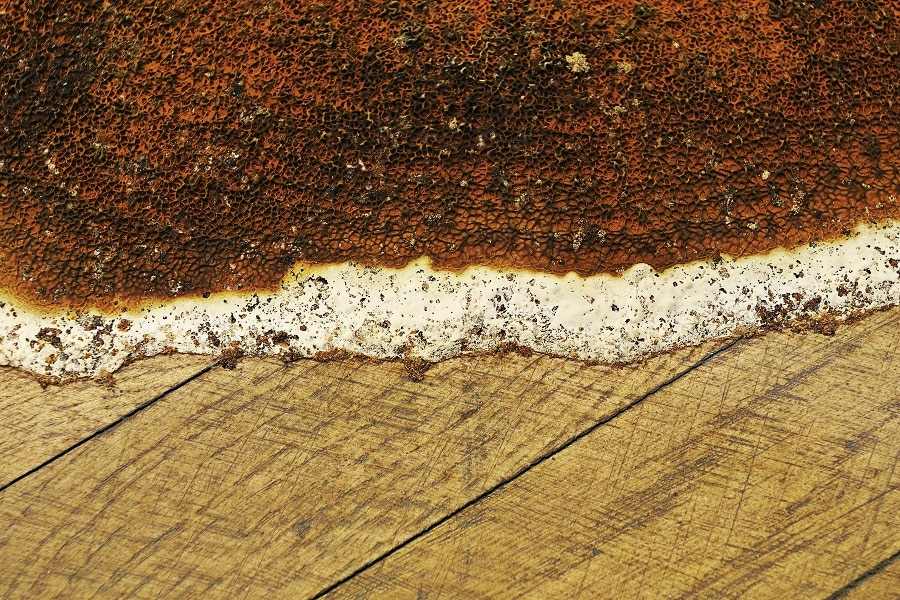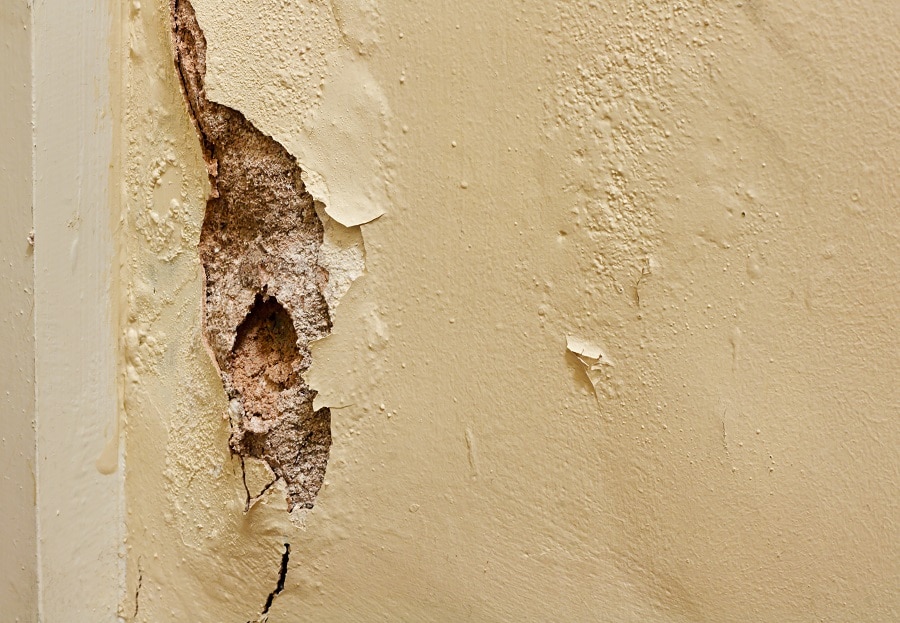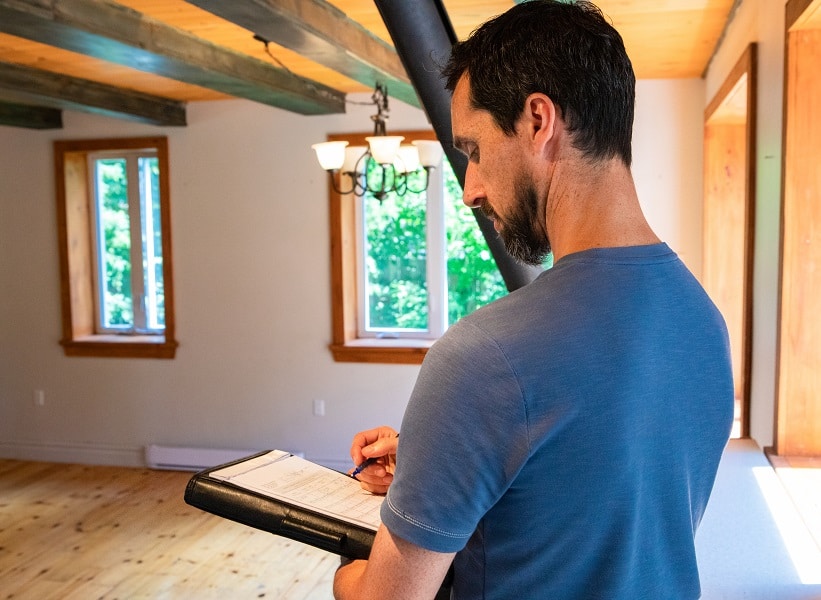What is dry rot?
Dry rot is a general term for Wood-decay fungus. Wood is broken down by Sporocarp (fungi), as the Mycelium consumes the wood, dry rot occurs resulting in fine dust particles, decomposition of the wood and dry rot bloom. Dry rot is a type of fungi that starts the rot process before penetrating the surface of timbers. A lot of these spores are present in soil and old wood already infected by dry rot.
This ensures that even treated wood will be re-infected with dry rot if it is wet enough (i.e., below 15 percent relative humidity). Dry rot attacks the structural parts of a property such as floor joists and rafters undetected, unlike wet rot which can only attack damp timber. It usually happens where you are not looking It could be under the plaster, under your floorboard, or in your loft. This is why it’s essential to know the signs and symptoms of dry rot and to get it treated quickly.
Our Guarantee
- upto 30 year guarantee
- customer focused team
- 20 years combined experience
- portfolio of satified customers
- attention to detail
- Construction line accreditation
- public liability insurance
- CHAS accreditation
What is the difference between dry rot and wet rot?
Dry rot and wet rot are two different kinds of fungus that can destroy wood if left untreated. The biggest difference between dry rot and wet rot is the moisture that wet rod needs in order to spread. Another significant difference to be aware of is that wet rot can spread across larger areas faster. That’s right because timber based products never come into contact with mycelium – the fungus that causes Dry Rot to form. Dry rot is the most severe type of decay of fungus in a property, spreading too much of the structural timber and damaging it whether wet or dry and causing a greater risk of structural damage throughout a property. Wet rot can occur on drier timber, but it generally spreads further when it becomes wet.
Call Our Sussex Damp Experts team now for quote, consultation and advice:
Call on 01273 257 765.
What are the causes of dry rot?
Many types of fungi lead to dry rot. Serpula Lacrymans is the most popular in the Selsey. If it’s not handled fast enough, it’s going to spread over your house, brick and mortar, and even plaster. This will affect the integrity of your structural timber, and therefore the structural integrity of your entire house. Dry rot hits when you have too much moisture in your timber. This will attract the fungus that will then provide nutrients. The word “dry rot” is used to differentiate between “wet wood” and “dry wood rot.”
Wet timber fodder on a dry rot. While fungal spores need over 30% wetness to generate hyphae after this, these hyphae only need 20% wetness to survive. This hyphae can develop into a fungal body known as mycelium, which can disperse and find more wood in brick and stone. The fungi will remove hemicellulose, cellulose, and H2O, leaving behind a weak structure of the original wood. You need an expert to examine your property and determine whether your rotting timber is a result of dry rot or a different type of fungus. This is really important since the cure for these damages can differ based on the actual cause.

The dangers of dry rot in Selsey
Dry Rot Effect on your Property
The greatest issue with dry rot is that it can easily attack the structural integrity of your house. Dry Rot is a fungus that attacks timber by breaking it down, causing timber to crumble. In serious circumstances, it can cause various parts of your house to fall apart. It won’t attack the mortar between your bricks or stones, but it can travel through it. This is why regular checks are important.
Dry Rot can cause extensive damage, and it is vital that you get to it as soon as possible. When you know a dry rot problem is imminent, call in the experts at Dry Rot Experts and Rescue. If you’re worried about dry rot, an inspection from our expert team can help you avoid major problems in the future.
Dry Rot Effect on Your personal health
The fungus that causes dry rot does not cause harm. If dry rot goes undetected, it can compromise the structural integrity of your home and cause sickness. This is especially precarious for the elderly, children and anyone with respiratory conditions such as asthma.
What are the Warning Signs of Dry Rot?
Discovering dry rot early is essential to preventing devastating and costly damage. A full assessment is recommended if you experience any of the following signs/symptoms.
-
The beginning of the dry rot cycle
The spores of the dry rot fungus are carried by the wind across large distances. They only need a small place to come inside and will slowly but surely chew holes through the wood. They can germinate and produce hyphae as they feed on it, if the wood provides them sufficient nutrients to do so. As these hyphae expand and eat, they may enter a spider web-like array called mycelium. Mycelium is white or grey They can even work their way into your property’s foundations and spread into the mortar, bricks and plaster to find new timber.
-
Your timber is damaged.
You are likely to start noticing rot issues if your timber begins to dry out. Often this can also cause the timber to collapse. You will also notice the dry rot darkening the color of your wood. Scientists have discovered that dry rot can lead to something called cuboidal cracking. The pressure of water can cause timber boards to break up into shapes around 50 mm in width, a phenomenon called cuboidal cracking. The fungal deterioration will also spread further into the wood, causing hyphae the white fungal growth. Also known as dry rot, hyphae is a common symptom of dry rot.
-
Your timber will smell.
If your wood is infected by dry rot, it will have a different, fungal smell. This can happen even if you can’t see the outbreak of dry rot. The smell of mold, however, is not a definite indicator that there are no signs of dry rot.
-
Your timber will have fungus bodies on it.
It has likely entered the final stage of dry rot and the most obvious. Mushroom-like fruiting bodies can start attaching themselves to your timber. If it becomes dry, dry rot can no longer feed on the wood so it will pop out spores instead.
-
Your timber will have spore dust.
Spores of the dry rot fungus don’t just occur in woods already affected by dry rot. It is a sign of dry rot when splotches of corroded dust embedded dry rot spores. In the last step of the dry rot stage, fruiting bodies yield spore dust.
Dry Rot Treatment in Selsey

Only when moisture levels are over 20 percent will a dry rot infestation occur. The first defense to eliminate the presence of fungus lies on controlling the levels of moisture in your living space or property. You are now in charge of the moisture levels. Consult a professional for a proper treatment of your dry rot.
Sussex Damp Experts are able to assist you with any contaminated timber removal and any remedial works. A professional should remove any infected timber. A professional damp proofing expert has the knowledge of the exact treatment. Some treatments are injected into the timber, others coat the surface of the timber. There are plenty of options for defensive treatment. If inhaled or injected accidentally, these chemicals may cause negative side effects because they require a specific attention.
A professional can determine if your timber needs Boron rods. Boron is a hazardous material, hence damp proofing experts wear the protective clothing. We use our specialist team at Damp Proofing to find any issues with dry rot, and assess the extent of the issue. Dry rots are a serious problem and can lead to serious issues if left untreated. In order to protect a wooden structure, it’s critical to treat dry rot immediately. Our team at Sussex Damp Experts will implement a suitable treatment that addresses your problem efficiently and cost-effectively. Please don’t waste time. Call 01273 257 765 for today’s free survey and successful care if you suspect you have a problem with dry rot.
How can you prevent dry rot damage in Selsey?
The elimination of dry rot is the first treatment process. A dry rot infestation will occur in any wooden areas of the house that traps ample water and is subject to moisture/moisture ingress. Practices that prevent them from forming: Make sure there are no leaks in your house. Make available sufficient ventilation.
Ventilate correctly and envelop the attic. Ventilate crawl spaces correctly. Stop dirt and moisture from getting into your basement or crawlspace. Examine all areas of the roof and wall surrounding the chimney from top to bottom, ensuring that water is being directed away from the chimney properly. Keep the sinks and downs clear. It’s a very good idea to check your pipes and heating system for leaks when using a wet system Owing to the humid conditions needed for dry rot fungus to be fed and germinated, the easiest way to reduce the possibility of dry rot is to decrease moisture levels. For instance, if you plug the leak, you prevent water from flowing into the pipe and causing future damage.
Speak to a Dry Rot specialist in Selsey
We are equipped to fix any wet or dry red issues that concern your property or your house. We will provide a free written estimate prior to beginning any work so that you know exactly what to expect. For some years, we have assisted thousands of Selsey homeowners with their damp problems, and we will support you as well. Call us now to book a free survey and quote 01273 257 765. I am an expert in dry rot and timber treatment. I can visit your property to identify the extent of the infestation and recommend a solution specific to your requirements. This allows us to give impartial recommendations and advice on the type of treatment you will need.

We have a complete list of expert surveyors who carry out all types of surveys and assessments, from pre-purchase surveys to full structural repairs. Dry rot is a long term problem, and can get worse if left unchecked, if you notice any signs of damage on your fence, it is better to contact our contractors right away. Sussex Damp Experts will be able to help you no matter what the nature of your damp issue is, email or call us on 01273 257 765
FAQ
Should dry rot be restored or replaced?
A certain level of dry rot can be repaired, but whether the damaged areas provide the house with structural stability, such as beams and joints, or even flooring, it is not recommended. Replace the wood in such a situation instead of repairing it. Whether you restore or rebuild the wood, it is better if you avoided the conditions that caused the rot to flourish in the first place or risked it coming back. Your roof leaks, broken gutters, or downspouts, plumbing leaks or insufficient ventilation should be inspected when considering a roof moisture accumulation You may consult a specialist to find and repair the problem.
Will you be able to treat my Dry Rot problem effectively?
With our expertly trained surveyors and specialists, a dry rot problem can be treated, rectified, and your timber can be protected for the future.
How do I discover how far Dry Rot has spread?
If you have traced the dry rot fungus quickly or not, a professional will identify the source of the problem. They will be able to trace the fungus in the different masonry and plaster from which it has spread.
How much can dry rot widen?
Dry rot spores can spread in anyplace with the right environmental settings. The reason is that they are carried in the atmosphere. If your timber has a moisture content of around 20%, and if it is in the open air, these conditions are attractive to dry rot fungus. This suggests that fungus groups can disperse to multiple materials. If dry rot is spreading across masonry and plaster, and if it reaches more timber to feed off where the timber is moist. It can widen further. Dry rot fungus needs five things to survive: the right temperature, drive rot spores, moisture, oxygen, and the food source. In any home in Brighton most of this is present.
Will dry rot stretch?
What should I do to control dry rot?
First identify the reason for your timber moist before solving it. A different treatment shall be given if the reason for your timber moisture is outside.
What are the effects of living dry rot unchecked?
Dry rot is the most insidious form of moisture that can infest property and cause permanent damage to the building if left untreated. Sometimes, once the harm is already done due to the places in which the problem is likely to be the presence of dry rot does not come to light.
Is dry rot stringent?
Dry rot can be particularly common in wooden properties, so it is essential that early signs of dry rot are identified before the damage becomes too severe.
How am I meant to know if I have dry rot?
A timber survey will assess how your timber is affected by being exposed to moisture. Later on, fruiting bodies and mycelium will be noticeable in the drive rot life-cycle.
Where can dry rot grow?
Dry rot attacks and rots timber that’s been in contact with water for a long period of time. Although it can often be mistaken for other problems in its early stages, it is important to seek advice. In every structure, both old and new, dry rot can grow. The reason being that it is caused by moisture and wetness that happen anyplace. Dry rot can be caused by leaks or weather, meaning the type of property does not affect it.




